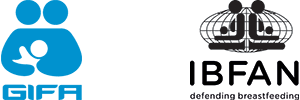
Breastfeeding Medicine Journal – New Rochelle, NY, December 14, 2021—The percentage of infants fully breastfed at 1,3, and 6 months significantly decreased during the COVID-19 pandemic among participants of the Special Supplemental Nutrition Program for Women, Infants, and Children (WIC) in Southern California. The percentage of infants who received any breastfeeding also decreased during these time periods, as reported in a study published in the peer-reviewed journal Breastfeeding Medicine. Click here to read the statement now.
Breastfeeding education is one of the pillars of the WIC program. It provides staff with the proper lactation training. During the COVID-19 pandemic, WIC services began to be offered remotely instead of face-to-face.
Investigators Maria Koleilat, DrPH, MPH, from California State University, and coauthors, compared fully breastfeeding rates pre-COVID-19 to during COVID-19 among WIC participants and found that rates dropped significantly from 41.79% to 28.09% at 1 month, 28.51% to 18.06% at 3 months, and 15.66% to 10.38% at 6 months.
The investigators offer several possible explanations for the decrease in breastfeeding rates. “Breastfeeding support is a priority in the WIC program,” they state. “However, the shift to remote services delivery and the corresponding reduction in live support of WIC services due to the pandemic may explain the decline in breastfeeding rates and the increase in early weaning in 2020. Another possible explanation is the mixed messages that new parents received regarding the safety of COVID-19 and breastfeeding.”
“These data document the disruptive and negative impact of the COVID-19 pandemic on infant well-being and the challenges to our health and social system to reestablish basic public health practices,” says Arthur I. Eidelman, MD, Editor-in-Chief of Breastfeeding Medicine.
Maria Koleilat et al, The Impact of COVID-19 on Breastfeeding Rates in a Low-Income Population. Published Online: 3 Dec 2021 https://doi.org/10.1089/bfm.2021.0238
